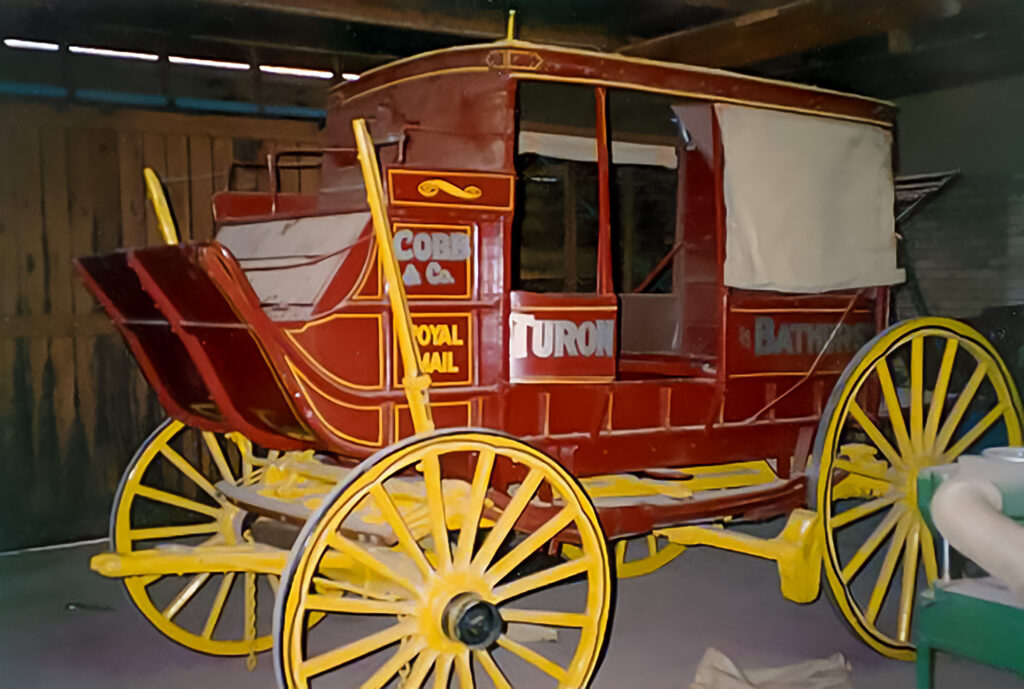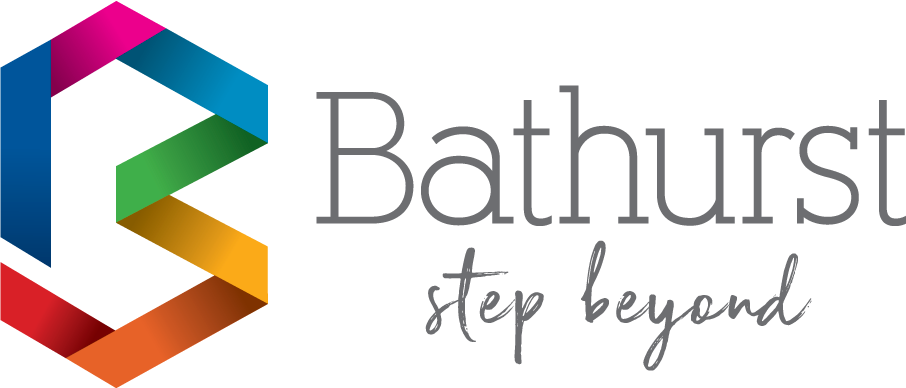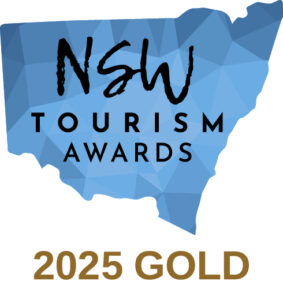Restoration of the Cobb & Co Coach
Restoration Cobb & Co Coach
The Bathurst Connection
The original coaches used by Cobb & Co were imported from America and England. However, the company soon started to build their own vehicles in Australia. Factories were set up in Victoria, New South Wales and Queensland with one of the main sites being in Bathurst. The original factory site, store and stables is now the home of the Bathurst Aquatic Centre in Elizabeth Street. Cobb & Co’s headquarters were also located in Bathurst on the corner of William and Howick Streets.
The quality of these locally made coaches was highly superior to the imported ones as they were better able to cope with Australian conditions, roads and climates. They were made of lighter and more resilient timbers, with the body suspended on bullock hide straps increasing flexibility and reducing road shock.
This particular coach has specific relevance to Bathurst as it was owned by Bathurstian Burt Elliott and was housed at the livery stables at the rear of the Royal Hotel.
Burt was sometimes a replacement driver for Cobb & Co and acquired the coach when it was replaced with a motorised vehicle. Around 1925/1926 the coach was bought from Mr Elliott by the Bathurst Museum and was housed in the the former Bathurst TAFE building in William Street.

The Bathurst Coach Before Restoration
The Push for Restoration
The coach remained on display in the museum until 1976. There was talk that it would be moved from Bathurst to be displayed at the Powerhouse Museum in Sydney. For the coach to remain in the city proof of ownership had to be established.
The shock of almost having the coach taken from the city began the push for restoration. This unique piece of machinery is not only part of Australia’s heritage and history but also part of Bathurst’s. The restoration was not simply to secure a tourist attraction but more to preserve a special piece of Bathurst’s history.
Mr Burns asked permission to study the coach in preparation for building a replica. His study revealed that the coach was in a bad state of disrepair and that previous attempts to repair it had been ‘shoddy’. It was seeing this piece of heritage in a state of neglect that prompted Mr Burns to approach Bathurst City Council, to offer his services for a total professional restoration of the coach.
Restoration Process
Stage 1
The coach was completely dismantled and the paint stripped. This revealed more parts and timber that needed replacing than originally thought. Also uncovered were earlier attempts at restoration that had replaced approximately 5% of the original parts. This was found to be the most difficult aspect of the restoration.
Stage 2
All pieces of the main body were cleaned and parts replaced where necessary using similar materials if possible. Timbers had to be treated and painted before being re-joined.
Stage 3
This involved the restoration of the undercarriage and wheels. The exact line work on the wheels proved to be a time consuming task. The springs that support the body consist of ten 3″ x1/4” leather straps on either side of the coach acting as shock absorbers. Leather springs were used because metal springs were always breaking in Australia’s rough conditions.
Stage 4
Re-upholstering the seats and remaking the side curtains were the next task. The seats had to be fully upholstered and padded with lint. The packing was coconut fibre which had been used in upholstery for centuries and the seats were leatherette. The centre back seat folds down to allow three passengers access to this section.
Stage 5
The final stage was signwriting, a job that took many hours due to the detail involved. This task was performed by Mr Norm King, a friend of Mr Burns.
During all stages it was difficult to find authentic parts, but the main priority of restoring the coach to its original state, was always adhered to.
Relocation and Display
Once the final stage of restoration was complete the coach was moved to the Bathurst Visitor Information Centre. Originally at 28 William Street before the Visitor Information Centre was relocated to 1 Kendall Ave in 2004, where it remains today.

